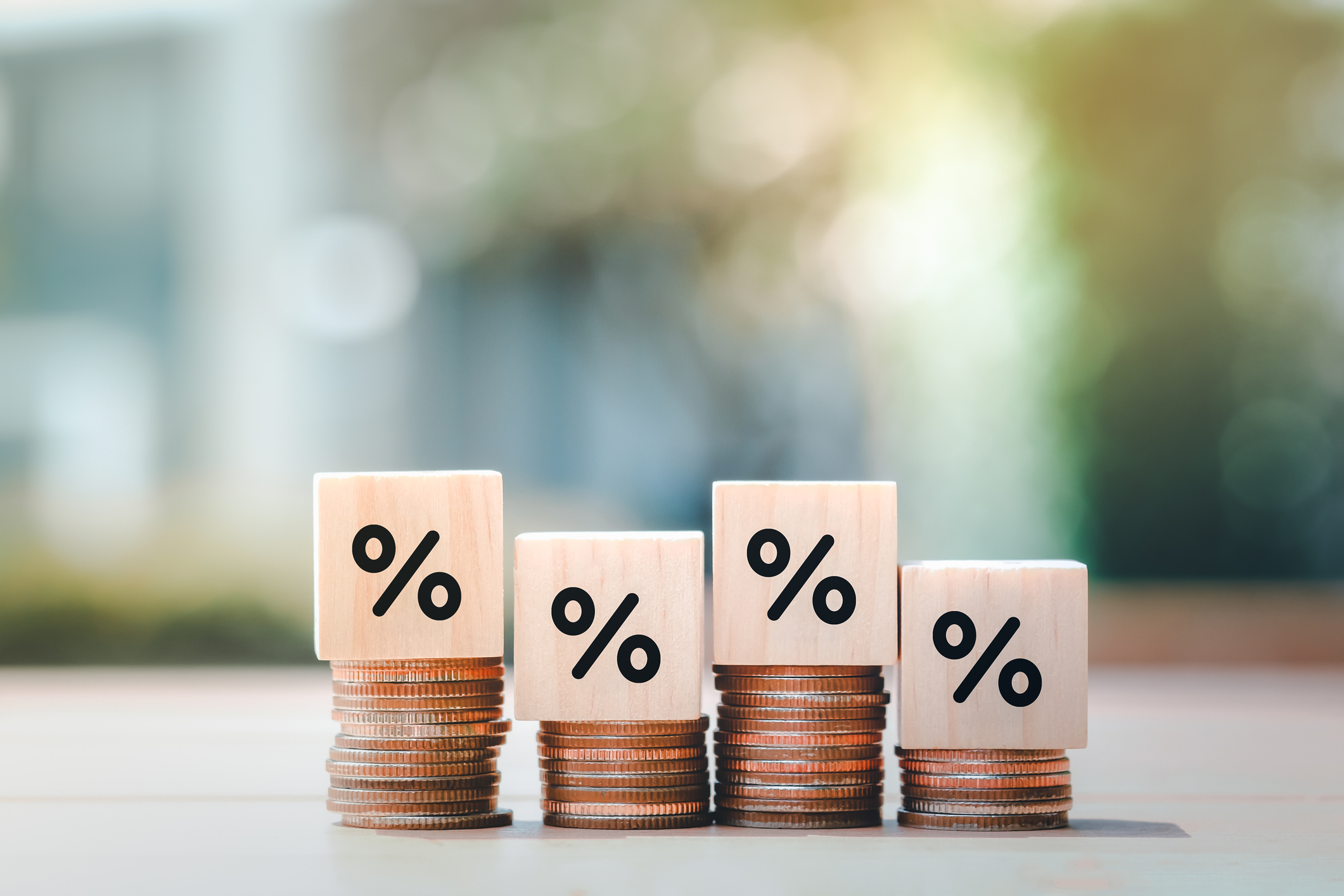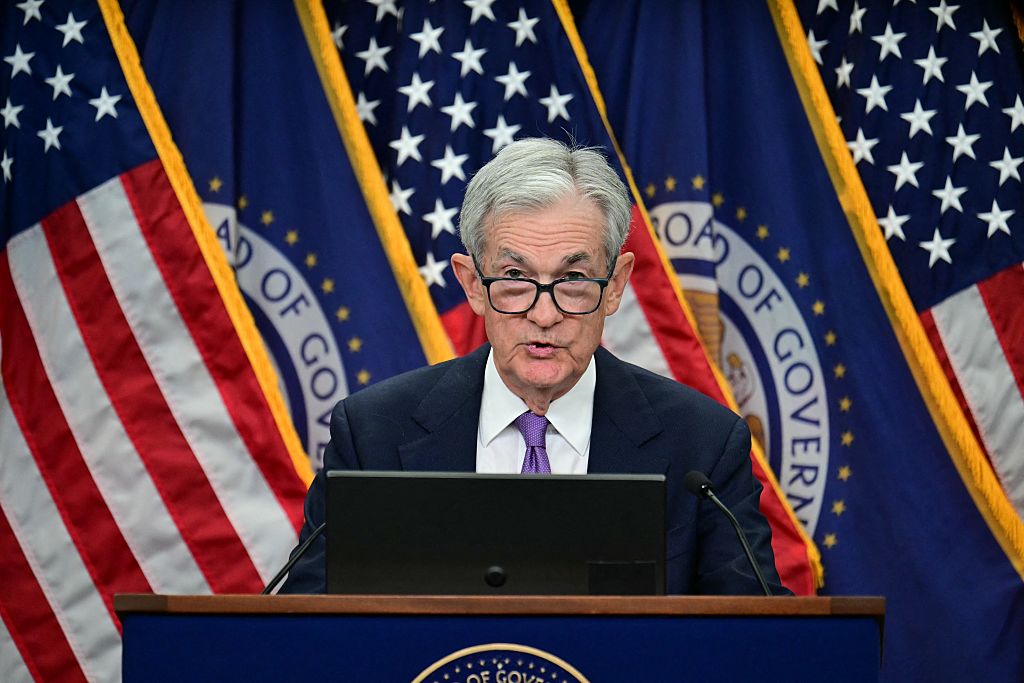Where to Find the Best Bond Market Deals
The bond market is starting to look interesting after a rough start to the year. Here's how to find the best opportunities based on your own investing goals.


The bond market fills two primary roles for investors.
To start, bonds generate income. (Or, at least most do. The vast majority of bonds pay semiannual coupon payments.)
And secondly, they provide diversification. As bonds tend to have a low correlation to the stock market, they generally help to reduce losses during bear markets and reduce the overall level of volatility.
From just $107.88 $24.99 for Kiplinger Personal Finance
Become a smarter, better informed investor. Subscribe from just $107.88 $24.99, plus get up to 4 Special Issues

Sign up for Kiplinger’s Free Newsletters
Profit and prosper with the best of expert advice on investing, taxes, retirement, personal finance and more - straight to your e-mail.
Profit and prosper with the best of expert advice - straight to your e-mail.
2022 has put some of these assumptions to the test. We started this year with yields too low across large swaths of the bond market to offer meaningful income. And due to the Federal Reserve's aggressive tightening, bonds have also been less effective than usual in providing diversification. The iShares Core U.S. Aggregate Bond ETF (AGG), considered by many in the industry to be a proxy for the "bond market," is down about 14% year-to-date as of November 21.
But here's where it gets fun. After an extraordinarily difficult 2022, bonds are starting to look interesting based on both of the criteria above. Yields are now close to multi-year highs across the yield-curve. And with investor concerns now migrating from inflation risk to recession risk, bonds may once again be the portfolio hedge they have traditionally been in the months ahead.
But where do investors start looking? The "bond market" isn't a single monolith. Bonds can be divided and subdivided in almost infinite ways based on maturity, credit quality, call features and a host of other criteria.
"Choosing the right bond or bonds for your portfolio ultimately comes down to your specific needs and your macro outlook," says Douglas Robinson, founder and president of RCM Robinson Capital Management, a registered investment advisor based in San Francisco, California, specializing in fixed income strategies. "In particular, your choice of maturity will come down to your time horizon and when you need the money as well as your outlook on inflation."
It also comes down to risk tolerance. If your primary motivation is high yield, you might be willing to take your chances on lower-credit-quality issuers. But if diversification and safety are your priorities, you're going to want to stick with U.S. Treasury securities, as these are the only truly "risk-free" bonds on the market. Let's break it down.
Start with Maturity
Insurance companies and pension plans generally have time horizons measured in decades. In some cases, the time horizon might even be "infinity."
But that's not the case for an individual investor. The human lifespan being what it is, a time horizon of a couple years or a decade or two is generally going to be it.
Think about your own objectives. If you're looking to fund a college fund for a newborn baby, then your maximum time horizon would be about 18 years. If you're looking to park down payment money for a future house, your horizon might be just a couple years at most.
As a general rule, you don't want to buy extremely long-dated bonds in the 20-30 year range because they can be wildly sensitive to interest rate moves. As a case in point, consider the iShares 20+ Year Treasury Bond ETF (TLT). Due to the major spike in bond yields in 2022, the exchange-traded fund (ETF) is down over 30% this year, actually losing more than the S&P 500 stock index. (Of course, that kind of movement might be perfectly fine if you're looking to aggressively trade as opposed to investing for safety and income.)
Another factor to consider is the shape of the yield curve. In a normal market, the yield curve slopes upward, meaning that longer-term yields are always higher than shorter-term yields.
That's not the case today, as the yield curve is inverted. Depending on the specific credit quality you happen to be looking at, shorter-term bonds may actually yield more.
As an example, as of this writing, Treasuries in the 1-3 year range yield about 4.7% on average. The average yield on 20+-year Treasury bonds is a decent bit lower than that at around 4.2%.
Weighing your portfolio too heavily in short-term bonds presents reinvestment risk – or the risk that your options once the bond matures will have lower yields than are available today. So, ultimately, your job as an investor is to balance the benefit of current yields against the reinvestment risk. And generally, the best way to do this is simply to diversify, spreading your investment across a ladder of bond maturities.
Credit Quality Matters Too
If you want absolute safety, buy only U.S. Treasury securities and be done. But being willing to accept a little credit risk in the bond market will generally mean a larger potential yield. And the more risk you take, the higher your potential return.
For example, as of this writing, the average yield on 3-5-year Treasuries was about 4.2%. The average yield on 3-5-year AA-rated corporate bonds was about 4.7%, and the yield on 3-5-year BBB-rated bonds was about 7.6%. And naturally, if you are willing to accept the risk of non-investment-grade "junk" bonds, the yields are even higher, though this higher yield comes with the higher risk of default.
Which Bond is Right for You?
Every investor is going to be a little different. But as a general rule, if you are going to err, it's best to err on the side of higher quality and shorter time to maturity. By all means, diversify and include some longer-dated bonds and some more speculative credit ratings. But if you value safety, keep your portfolio more heavily weighted to short-term, high-quality issues.
Today, you can get yields of close to 5% in safe, boring Treasuries with just a handful of years to maturity. And frankly, that's hard to beat.
Profit and prosper with the best of Kiplinger's advice on investing, taxes, retirement, personal finance and much more. Delivered daily. Enter your email in the box and click Sign Me Up.

Charles Lewis Sizemore, CFA is the Chief Investment Officer of Sizemore Capital Management LLC, a registered investment advisor based in Dallas, Texas, where he specializes in dividend-focused portfolios and in building alternative allocations with minimal correlation to the stock market.
-
 Dow Dives 870 Points on Overseas Affairs: Stock Market Today
Dow Dives 870 Points on Overseas Affairs: Stock Market TodayFiscal policy in the Far East and foreign policy in the near west send markets all over the world into a selling frenzy.
-
 Quiz: Understanding Roth Conversions
Quiz: Understanding Roth ConversionsQuiz Discover if a Roth conversion is the right move for you by taking our quick quiz.
-
 How Prices Have Changed in Trump's First Year
How Prices Have Changed in Trump's First YearTrump campaigned on bringing prices down for Americans. Here's where prices stand one year into his second term.
-
 The December CPI Report Is Out. Here's What It Means for the Fed's Next Move
The December CPI Report Is Out. Here's What It Means for the Fed's Next MoveThe December CPI report came in lighter than expected, but housing costs remain an overhang.
-
 How Worried Should Investors Be About a Jerome Powell Investigation?
How Worried Should Investors Be About a Jerome Powell Investigation?The Justice Department served subpoenas on the Fed about a project to remodel the central bank's historic buildings.
-
 The December Jobs Report Is Out. Here's What It Means for the Next Fed Meeting
The December Jobs Report Is Out. Here's What It Means for the Next Fed MeetingThe December jobs report signaled a sluggish labor market, but it's not weak enough for the Fed to cut rates later this month.
-
 The November CPI Report Is Out. Here's What It Means for Rising Prices
The November CPI Report Is Out. Here's What It Means for Rising PricesThe November CPI report came in lighter than expected, but the delayed data give an incomplete picture of inflation, say economists.
-
 The Delayed November Jobs Report Is Out. Here's What It Means for the Fed and Rate Cuts
The Delayed November Jobs Report Is Out. Here's What It Means for the Fed and Rate CutsThe November jobs report came in higher than expected, although it still shows plenty of signs of weakness in the labor market.
-
 December Fed Meeting: Updates and Commentary
December Fed Meeting: Updates and CommentaryThe December Fed meeting is one of the last key economic events of 2025, with Wall Street closely watching what Chair Powell & Co. will do about interest rates.
-
 The Delayed September Jobs Report Is Out. Here's What It Means for the Fed
The Delayed September Jobs Report Is Out. Here's What It Means for the FedThe September jobs report came in much higher than expected, lowering expectations for a December rate cut.
-
 October Fed Meeting: Updates and Commentary
October Fed Meeting: Updates and CommentaryThe October Fed meeting is a key economic event, with Wall Street turned into what Fed Chair Powell & Co. did about interest rates.